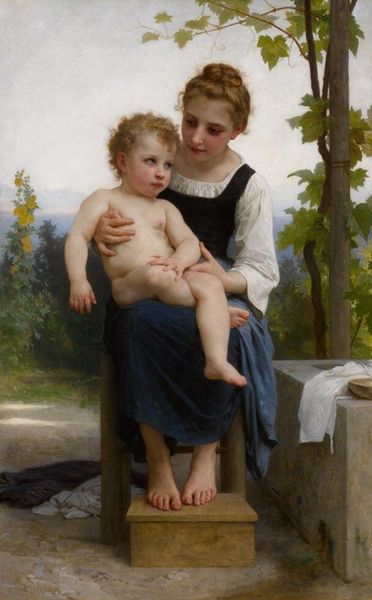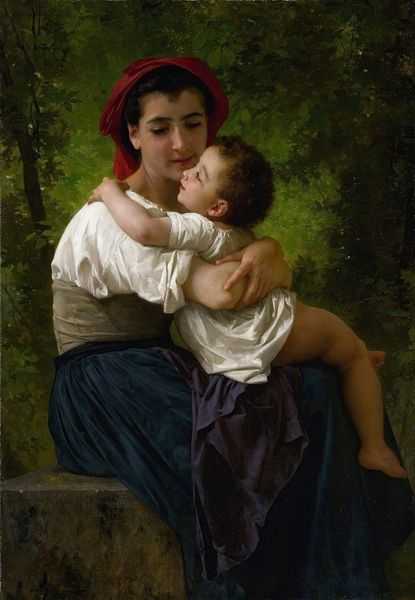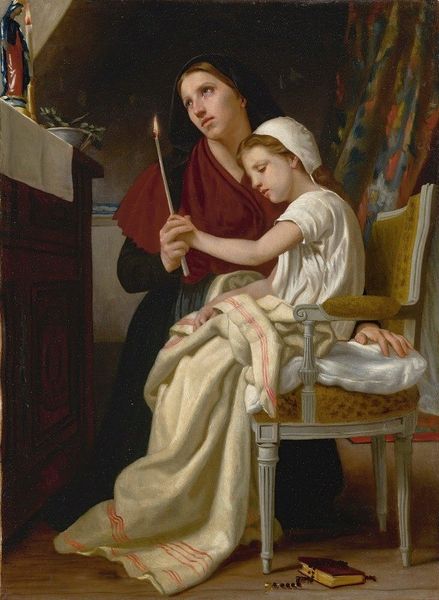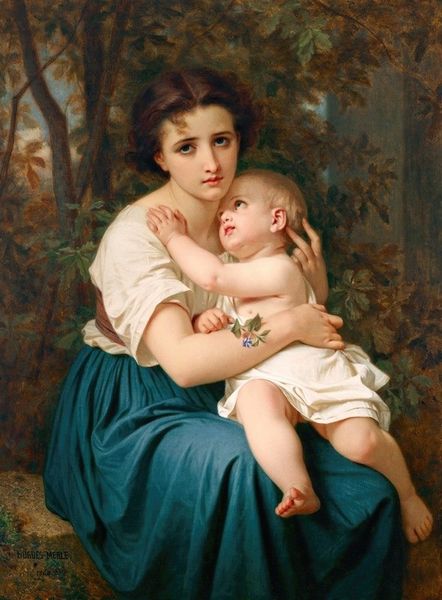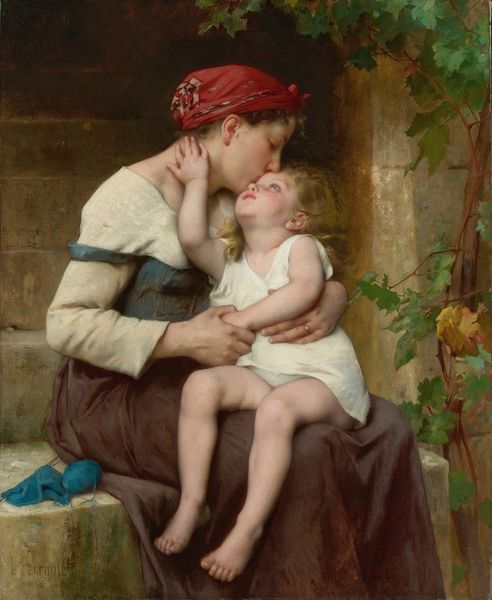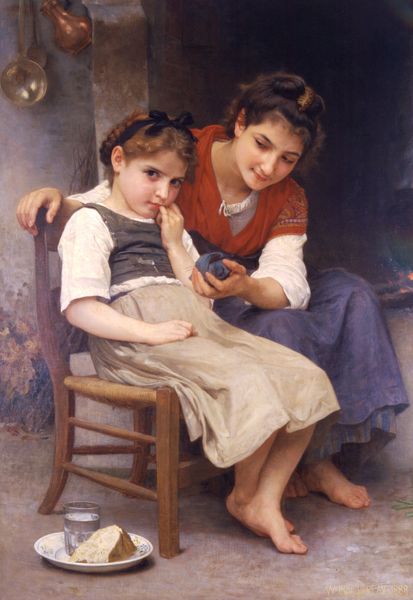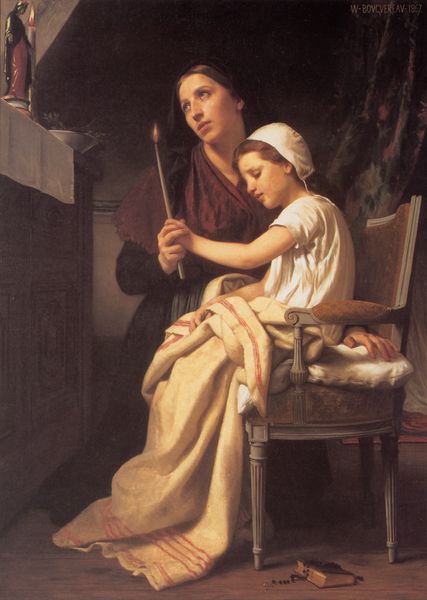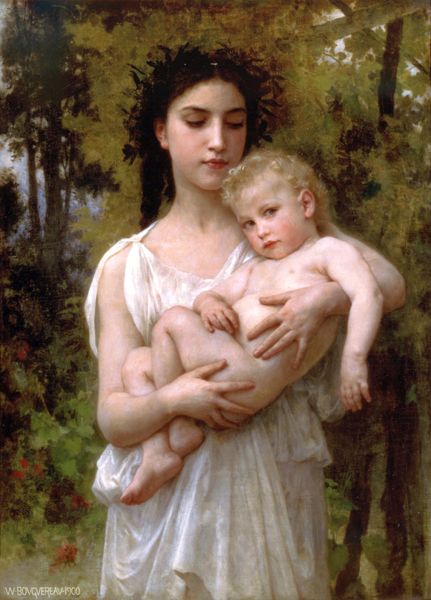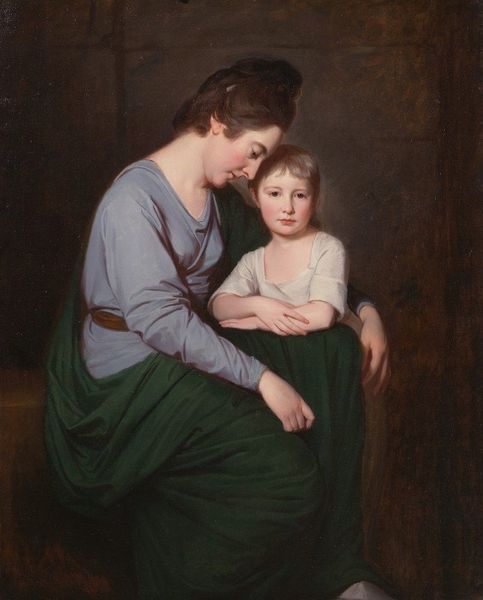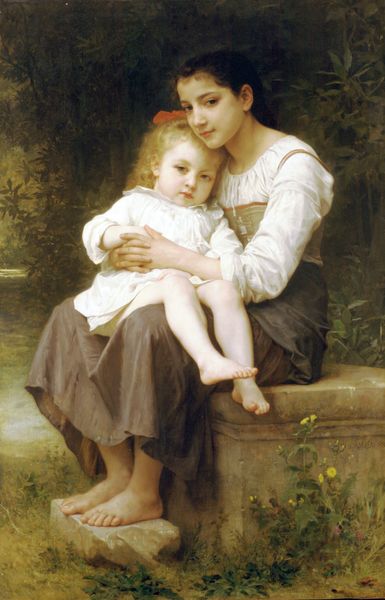
Copyright: Public Domain: Artvee
Editor: "La Grande Soeur," painted in 1877 by William Bouguereau using oil paint. It's a really touching depiction of siblinghood, and the textures seem so smooth and lifelike. What do you notice in the composition, focusing on formal elements? Curator: Indeed, observe first how the artist constructs a stable pyramidal form, anchoring our gaze. The elder sister's head is the apex, directing our eyes downwards. What do you observe about Bouguereau's brushwork, and the relationships it creates between areas of the canvas? Editor: I see the way the folds in the sister's dress are painted with such care, contrasting with the softer focus on the background details like the doorway and wall? Also, the consistent lighting creates the figures as if three-dimensional. Curator: Precisely. This precise realism creates a sense of harmonious, self-contained beauty, doesn’t it? Consider how Bouguereau also uses color; his limited palette enhances the somber, loving tone, the contrast of skin tones draws the eye. Now, does this attention to form seem to serve any broader purpose to you? Editor: I suppose the soft realism contributes to the piece's overall comforting sentimentality? The smoothness emphasizes a timeless snapshot of familiar, relatable care. Curator: An excellent point. It shows how an artist's careful use of form creates a painting with emotion and beauty as one. Thank you for those fine observations! Editor: Thanks for breaking it down for me; I hadn’t noticed all of those careful compositional decisions.
Comments
No comments
Be the first to comment and join the conversation on the ultimate creative platform.

